Remodeling your medical office is one of the best decisions you can make for improving patient satisfaction and increasing profit, but it can also be an anxious experience, for patients and physicians alike. To cut down on inconveniences and keep your medical office running smoothly during the remodeling phase, ask your medical contractor about these basic operational guidelines.
Remodeling your Medical Office Primer
1- Find an experienced medical office contractor.
Before you set out to remodel your outpatient clinic or MRI center, make sure you are dealing with a professional medical construction contractor who understands your goals and can deliver what you need. Plan monthly round table meetings that include all people involved in the building project- medical staff, architect, and the construction crew. Keep the lines of communication open throughout, and keep each other updated on progress, time management, and any difficulties that may arise.2- Maintain a clean and sterile atmosphere throughout the remodeling process.
Infection-control should be your top priority while remodeling your medical office, and you may need to take extra steps to ensure your patients that you are providing a safe, hygienic environment. The following standards should apply to all patient and medical staff areas while remodeling:- Establish proper waste removal.
- Control contaminated air with negative pressure units placed in areas under construction.
- Designate certain medical office entrances for remodeling crew only.
- Construct temporary physical barriers between patient areas and rooms being remodeled.
- Remodeling crew should be able to easily shut down heating, ventilation, air conditioning, and plumbing systems if needed.
3- Make sure construction crew cleans up at the end of the day.
Doctors’ offices, outpatient areas, and nursing stations should be kept clean of dust and debris at all times. In areas being remodeled, the construction crew should use tarps and temporary fencing to avoid distracting visiting patients. At the end of the day, tools should be placed out of sight, and the area should be tidied.4- Work around inconveniences.
Ask your medical contractor if there’s anything you should do to prevent inconveniencing your patients during the remodeling phase. He should be able to give you advice about common problems that can occur, but can be avoided with preparation.- Plan reserved parking spaces for contractor and construction crew.
- Dedicate space for storing tools and large equipment.
- Agree on hospital bathroom facilities for workers during remodeling.
- Schedule particularly noisy construction during slow periods when there are few patients- during lunchtime, after hours, or weekends.
- Post signs clearly instructing patients which areas to avoid, an in which areas they are permitted to enter.
- Make sure that patients are still able to walk about your medical office safely and easily.
- Keep all areas well lit.
5- Go over your security measures.
During remodeling, it’s important to maintain the same standards of security for your medical office, including areas not meant for patient access. Barriers between usable patient/staff areas and construction zones should be kept locked overnight. Keep prescription medications and medical imaging equipment safe from theft by requesting a security check on all employees involved in the remodeling project, including the medical compliant contractor and construction crew.Your turn!
Do you have any questions or suggestions? Please leave your comments below.
Share with your friends!
If you found this article helpful, then please share with your friends, family, and coworkers by email, twitter, or Facebook.
Like this? Read more:
Building Healthcare Facility Design Layouts that Patients Love
Top 10 Medical Clinic Trends that Increase Patient Satisfaction
Image credit